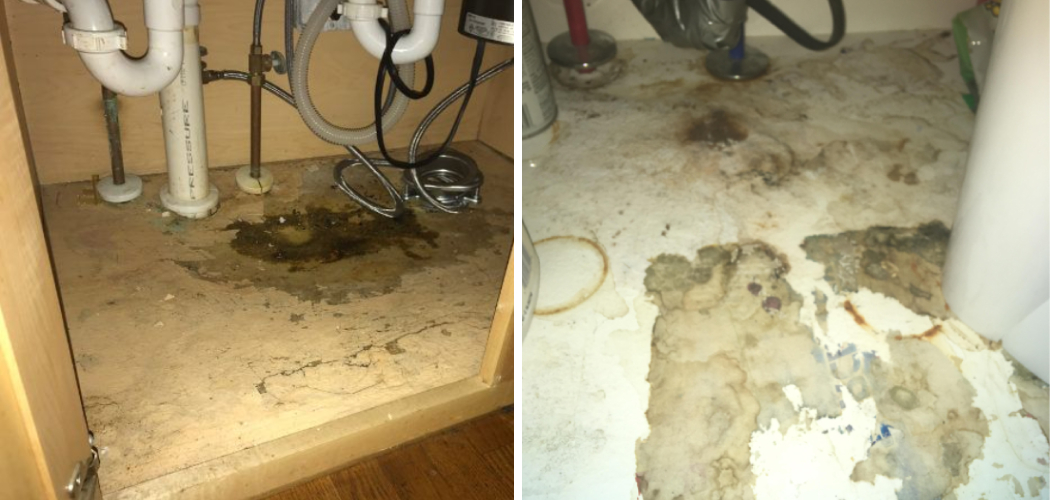A leaky sink can cause serious water damage under your sink, which can lead to costly repairs. Ignoring the problem can also lead to mold growth and mildew smell in your kitchen. However, with the proper tools and knowledge, you can fix water damage under your sink on your own. In this blog post, we will provide some tips on how to fix water damage under sink and save you from having to call a plumber.
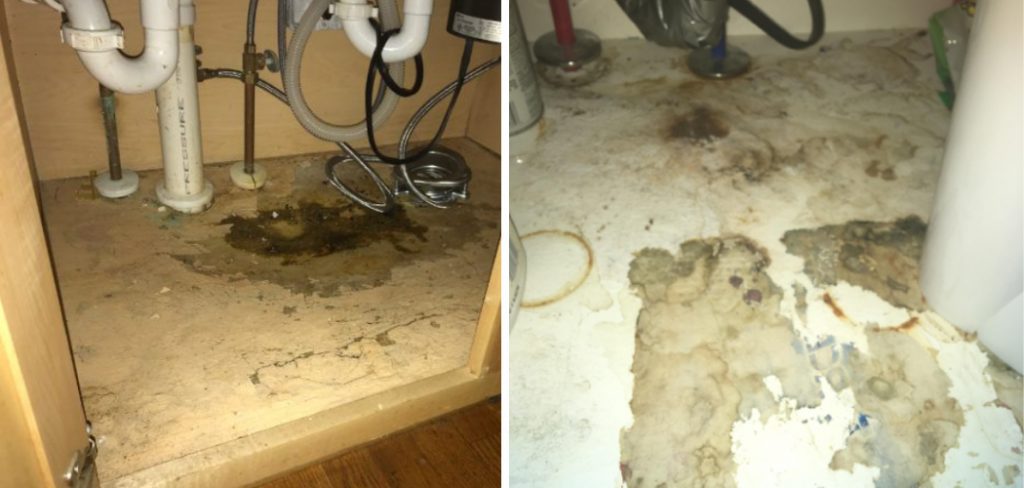
Can You Fix the Water Damage Under the Sink?
Water damage under the sink is a common household issue that requires immediate attention to prevent further damage. If left untreated, the water can lead to mold growth, weaken the cabinet structure, and cause permanent damage to your flooring. Thankfully, fixing the water damage under the sink is a relatively straightforward process.
Begin by turning off the water supply, removing any materials that are too damaged to repair, and drying the affected area thoroughly. Depending on the severity of the damage, you may need to replace the damaged pipes or install new flooring. While it may seem daunting initially, fixing water damage under the sink can save you a lot of money in the long run and prevent potential health hazards caused by mold growth.
Why Should You Fix the Water Damage Under the Sink?
Water damage can be tricky. We often don’t even notice it until it’s too late. But if you have water damage under your sink, you must act fast. Not only is it unsightly, but it can also lead to more serious problems down the line. If left unchecked, that water damage can become an ideal breeding ground for mold and mildew.
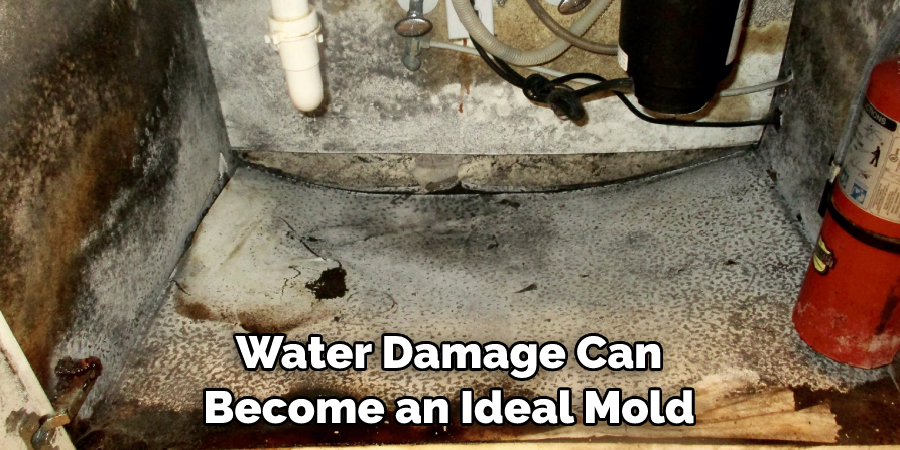
And those can cause a whole host of health problems, from allergies to respiratory issues. Plus, water damage weakens the structural integrity of your home, potentially leading to costly repairs or even complete renovations. So if you’ve got water damage under your sink, don’t wait to fix it – your health and your home will thank you.
7 Tips to Follow on How to Fix Water Damage Under Sink
1. Assess the Damage
The first step to fixing water damage under your sink is to assess the damage. Take a look under your sink and determine where the water is coming from. Check the pipes and see if they are loose or if there is corrosion. Make sure to turn off the water supply to avoid any further damage. Once you have located the water source, dry the area with towels or a cloth.
2. Remove Waterlogged Items
Next, remove any waterlogged items, such as cleaning supplies, sponges, or towels, from underneath the sink. If you have a wooden cabinet, make sure to remove any water that may have seeped into the wood. Use a wet/dry vacuum to remove any standing water or a hairdryer to dry the area. Make sure to toss any items that are beyond repair.
3. Repair or Replace Pipes
If the problem is a leaky pipe, then you will need to repair or replace the pipe. Turn off the water supply and remove the damaged section of the pipe. Replace the pipe with a new one, and tighten all connections to prevent further leaks. If you are unsure how to do this, it is best to call a plumber.
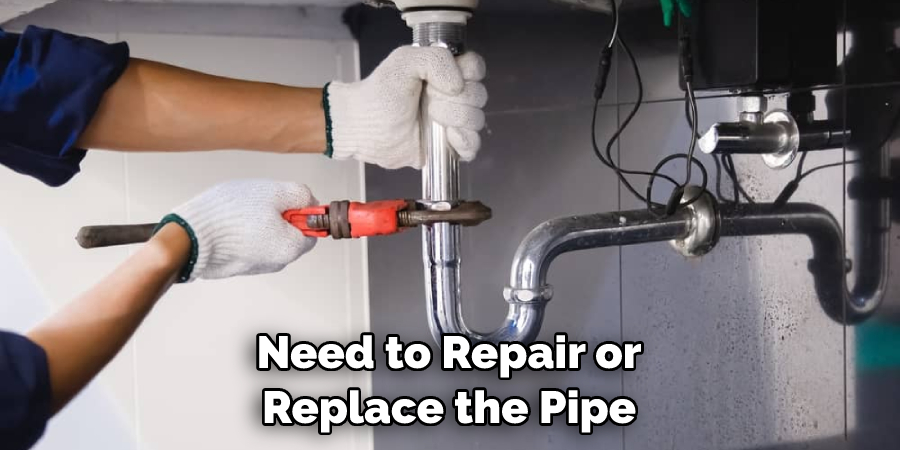
4. Fix the Sealant
Another common cause of water damage under your sink is a faulty sealant around the sink. A loose or cracked sealant can cause water to seep underneath the sink, damaging water. To fix this, remove the old sealant and clean the area thoroughly. Then apply a new sealant around the sink to prevent further leaks.
5. Prevent Future Damage
Once you have fixed the water damage under your sink, it is important to take steps to prevent future damage. Make sure to check under your sink regularly for any signs of leaks or water damage. Look for any rust, corrosion, or discoloration of pipes. Consider placing a drip tray under your sink to catch water before it causes damage. Lastly, avoid storing cleaning supplies or other items under your sink, as they can make it harder to notice leaks.
6. Clean and Sanitize
Once all the repairs are done, you should clean and sanitize the area to prevent any health hazards. Use a mixture of white vinegar and water to clean up any leftover debris or dirt. You can also use a disinfectant spray to kill off any bacteria or mold that may be present. Allow the area to dry completely before replacing any items.
7. Test for Leaks
Testing for leaks is the last step in fixing water damage under your sink. Turn on the water supply and check all the pipes, seals, and connections for signs of leaking or dripping water. If you find any issues, adjust the fittings and ensure everything is secure before turning off the water supply.
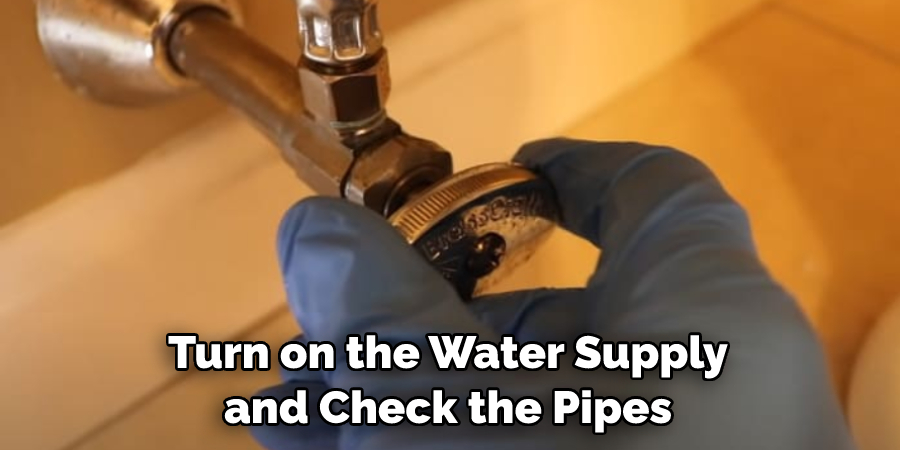
By following these tips, you should be able to successfully fix any water damage under your sink with ease. Remember that it is always best to call a professional if you are uncertain about any repairs. Taking care of water damage promptly can help prevent more serious issues from arising. Remember, investing in regular maintenance and inspections of your plumbing system can save you time and money in the long run.
5 Considerations Things When You Need to Fix Water Damage Under Sink
1. Shut off the Water Supply
The first step in fixing water damage under a sink is to shut off the water supply. This will prevent any additional water from entering the area and causing more damage. It is important to locate the main shutoff valve for the house and turn it off before beginning any repairs.
2. Remove Damaged Materials
Once the water supply has been shut off, it is time to remove all damaged materials from under the sink. This may include cabinets, countertops, flooring, or walls affected by moisture or mold growth. All of these materials should be disposed of properly as they may contain hazardous contaminants that can cause health problems if inhaled or ingested.
3. Dry Out the Area
Once all of the damaged materials have been removed, it is important to thoroughly dry out the area under the sink. This can be done using fans or dehumidifiers to remove excess moisture and prevent mold growth. Using a wet/dry vacuum may also be necessary to suck up any standing water that remains in hard-to-reach places, such as behind pipes or underneath cabinets.
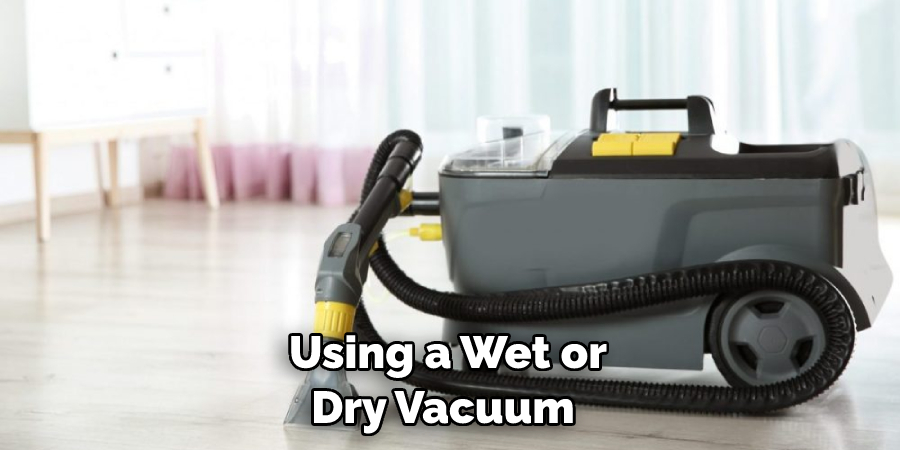
4. Repair Any Leaks
After drying out the area, it is important to ensure no leaks are present in any of the plumbing fixtures or pipes under the sink. If there are leaks, they should be repaired before continuing with any other repairs, as this could lead to further damage if not addressed immediately.
5. Replace Damaged Materials
Finally, once all leaks have been fixed and all areas have been dried out completely, it is time to replace any damaged materials removed earlier in the process, such as cabinets or countertops. Make sure to choose waterproof materials resistant to mold growth so that future water damage can be avoided as much as possible.
It is important to keep these steps in mind when fixing water damage under a sink, as they will ensure the project is done correctly and that no further damage occurs in the future. With the right tools and materials, you can easily repair any water damage you may encounter and get your sink looking great again!
5 Benefits of Fix Water Damage Under Sink
1. Prevention of Mold Growth
One of the primary benefits of fixing water damage under a sink is that it can help to prevent mold growth. When water accumulates in an area, it creates the perfect environment for mold to grow. Mold can cause various health problems, including respiratory issues and allergic reactions. Fixing any water damage under a sink will help reduce mold growth risk and keep your home healthy.
2. Reduced Risk of Structural Damage
Another benefit of fixing water damage under a sink is that it can help to reduce the risk of structural damage. Water that accumulates in an area can cause wood rot, which weakens the structure of your home over time. If left unchecked, water damage can lead to more serious problems, such as foundation or roof damage. Fixing any water damage as soon as possible will help keep your home structurally sound for years.
3. Improved Air Quality
Fixing water damage under a sink can also help to improve air quality in your home by reducing humidity levels and preventing mold growth. High humidity levels can cause condensation on walls and floors, increasing mold growth risk.

Additionally, high humidity levels can make your home feel stuffy and uncomfortable. By fixing any water damage under a sink, you can maintain optimal indoor air quality and keep your home comfortable all year round.
4. Increased Home Value
Fixing any water damage under a sink will also help increase your home’s value if you decide to sell it in the future. Buyers are often wary about homes with signs of water damage due to the potential for structural or health issues down the line. Showing potential buyers that you have taken steps to repair any existing water damage will give them peace of mind and could potentially increase the amount they are willing to pay for your home.
5. Peace Of Mind
Finally, fixing any water damage under a sink will give you peace of mind knowing there won’t be any long-term effects from leaving it untreated, such as mold growth or structural issues down the line. Taking proactive steps toward maintaining your home is always beneficial regarding safety and financial security!
Some Common Mistakes People Make When Trying to Fix Water Damage Under Sink
When attempting to fix water damage under your sink, it’s understandable to want to handle the issue as soon as possible. Unfortunately, many people make common mistakes that can exacerbate the damage rather than fix it. One of the most common missteps is using too much force to turn off the water supply.
This can damage the valve and lead to leaks. Another mistake is only addressing the visible damage and ignoring potential damage behind walls or inside cabinets. It’s important to thoroughly inspect the area and address any potential issues to prevent further damage.
Finally, wetting the affected area can lead to mold growth and further damage. Be sure to thoroughly dry the area before attempting any repairs. Taking these steps can help ensure that your attempts to fix water damage under your sink are successful and prevent any further issues from arising.
Conclusion
Following these tips can fix water damage under your sink and save you from costly repairs. Always maintain your sink properly, and check regularly for any signs of leaks or damage. If you are unsure how to proceed, do not hesitate to call a professional plumber to assess the situation and provide further advice.
By doing so, you can ensure that your kitchen remains in excellent condition for years. Thanks for reading our post about how to fix water damage under sink.

